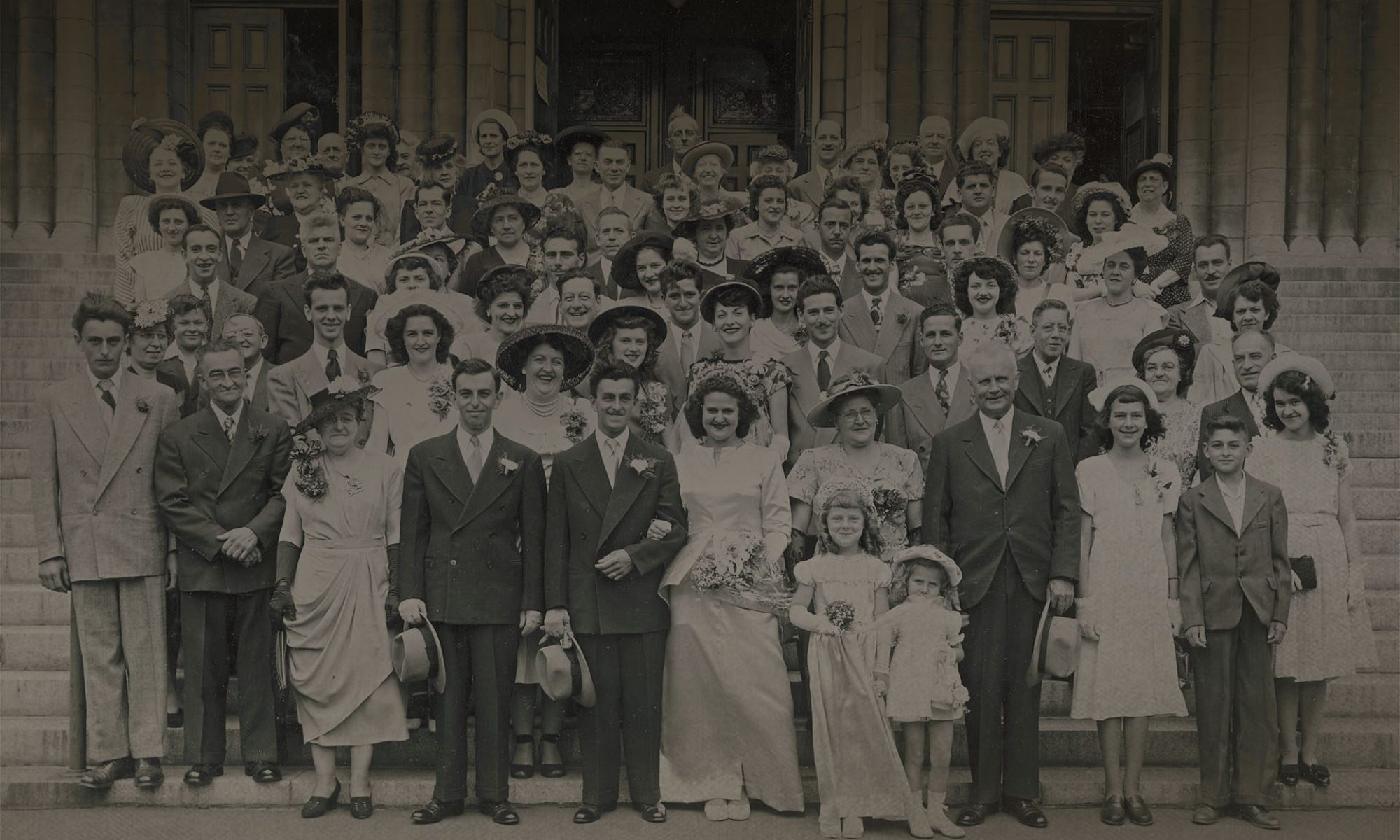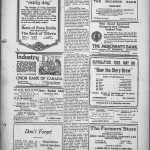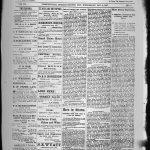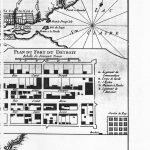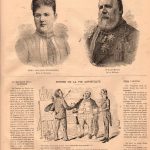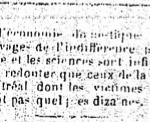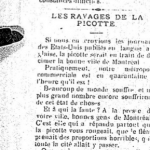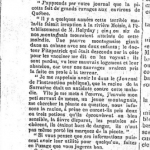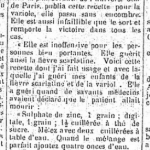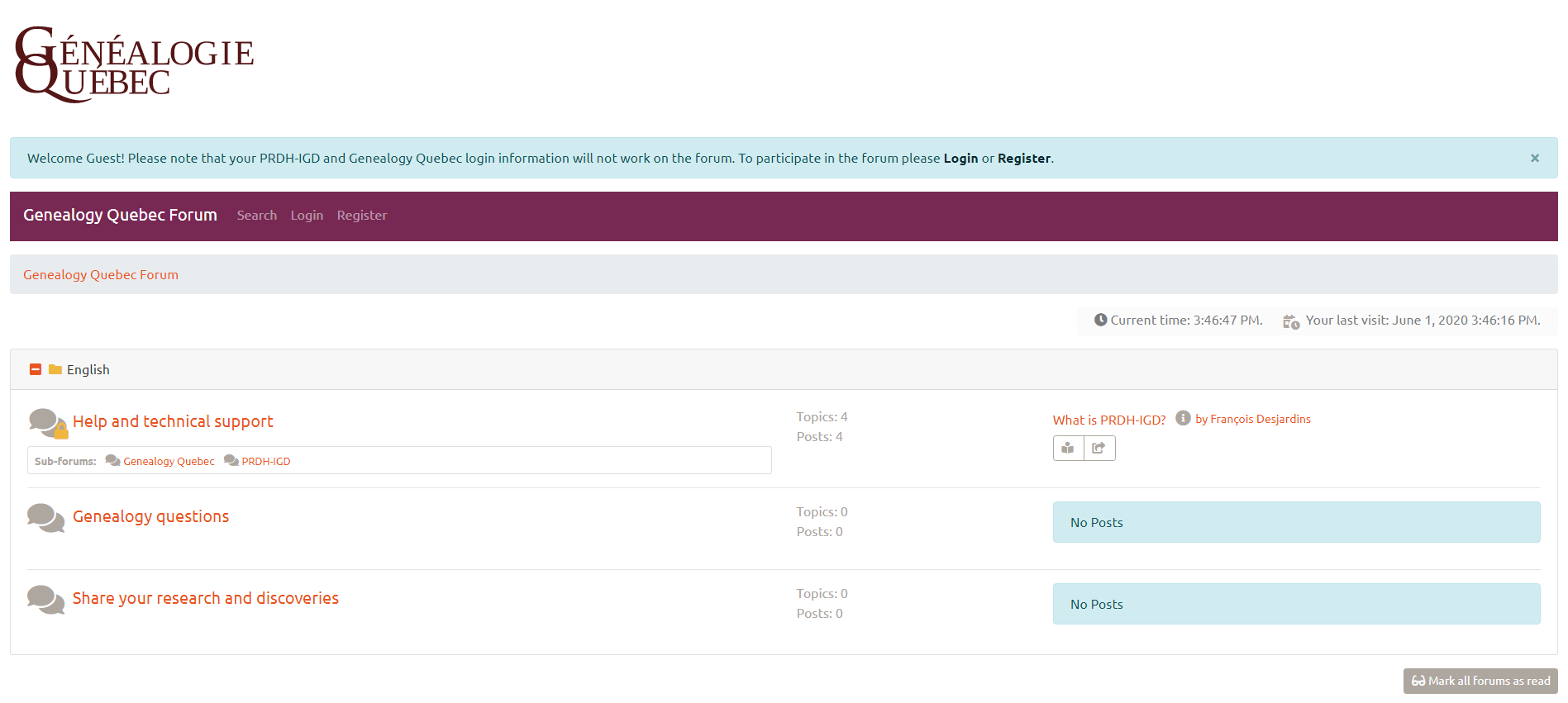 Slavery has allowed many societies to generate income at the expense of the exploited. While the history of slavery is no secret, few Canadians know that their ancestors benefited from this exploitation under the pretense of white superiority. As early as 1629, until its abolition in 1834, Natives and Black people were enslaved by the French and British colonists living in Quebec.
Slavery has allowed many societies to generate income at the expense of the exploited. While the history of slavery is no secret, few Canadians know that their ancestors benefited from this exploitation under the pretense of white superiority. As early as 1629, until its abolition in 1834, Natives and Black people were enslaved by the French and British colonists living in Quebec.
The first individual to be enslaved in New France is believed to be Olivier Le Jeune, an eight-year-old child from Madagascar who was taken into slavery by the Kirk brothers. Olivier Le Jeune died at about 30 years of age as a servant to Guillaume Couillard. The term servant, a translation of the French word domestique, is used here because the institution of slavery was not yet legal* in New France at the time. The document illustrated in Figure 1 is the only religious record available on this Malagasy child. Exhaustive studies of correspondence have made it possible to know his history and origin.
« Le 10 de may mourut a l’hopital Olivier Le Jeune domestique de Monseigneur Couillar après avoir reçu le sacrement de confession et communion par plusieurs fois il fut enterré au cemetiere de la paroisse le mesme jour. »
Which translates to:
“On the 10th of May died at the hospital Olivier Le Jeune servant of sir Couillar after receiving the sacrament of confession and communion he was buried at the cemetery of the parish the same day. “

Figure 1. Olivier Le Jeune: first Black slave that we know of in Quebec
Source: Record 68801, LAFRANCE, GenealogyQuebec.com
Olivier le Jeune is the first proof of slavery in the St. Lawrence Valley. Marcel Trudel, a pioneer in the study of slavery in Quebec, lists 4,185 Native and Black slaves in the Valley from the 17th to the 19th century (Trudel, 2004). These slaves were mainly acquired through alliances with First Nations, and were war prisoners from various enemy nations of the Native groups allied with the French colonists (Rushforth, 2012).
However, this number only counts the slaves that were found in written records. We believe there were approximately 10,000 Native slaves in New France between 1660 and 1760, but we only know the names of 1,200 of them (Rushforth, 2016).
The trace of slaves in the archives can be subtle and difficult to find. Few researchers have tackled the monumental task of identifying them. First, the term slave only started appearing in official documents around 1709, when Intendant Raudot normalized slavery on the territory of Quebec. (Trudel, 1990: xvi). However, priests remained reluctant to use the term. In the parish archives available on PRDH-IGD.com and GenealogyQuebec.com for the period, the word esclave (slave) is only listed 207 times. The term Panis was more commonly used to designate Native slaves. Among these is young Paul, slave of Paul Lecuyer, who resides in Montreal. His baptismal record illustrated in Figure 2 reads as follows:
« Ce jour d’huy dixseptième aoust mil sept cent quatre a esté baptisé paul sauvage de la nation des panis aagé environ de dix ans demeurant en la maison de paul lecuyer habitant de cette parroisse qui dit avoir achepte le dit sauvage pour la premierre fois desdits sauvages panis et aiant este pris esclaves par d’autres sauvages nommés les renards. Il la rachepte deulx et a le dit paul lecuyer este le parain dudit enfant baptisé et sa femme nommée francoise leconte en a este la maraine quy ont promis l’eléver et l’instruire en la foy catholique apostolicque et romaine aiant dessein de le re tenir a leur service tout autant de temps quil plaira a Dieu de disposer de luy a la mareinne signé et le parain a declaré ne seavoir escrire ny signer de ce enquis suivant l’ordonnance. »
Which translates to:
“Today, the 17th august 1704 has been baptized paul savage aged around 10 years old staying in the house of paul lecuyer living in this parish who claims having purchased said savage from the panis savages which had been enslaved by others savages named les renards. He was bought from them and said paul lecuyer is the godfather of the baptized child and his wife named francoise leconte is the godmother who have promised to raise him and instruct him in the faith of the apostolic and roman catholic church and to keep him under their service for as long as God wills. The godmother signed and the godfather has declared not knowing how to write or sign, as is inquired.”

Figure 2. Baptism record of Paul, slave of Paul Lecuyer
Source: Record 13744, LAFRANCE, GenealogyQuebec.com
This baptism record shows that young Paul is not mentioned as being the slave of Paul Lecuyer, but only as living in [his] house of and in their service. The priest, however, emphasizes that his godparents, as his owners, will raise him in the Catholic religion, without questioning the legitimacy of the presence of this young Native in the household. This demonstrates the normalization of the practice.
There are no other records mentioning this slave. We cannot find a burial record for this child so far, although his godparents promised to raise him within the Catholic faith; it appears that they did not offer him a burial on Catholic soil. Was he sold? Did he manage to escape his servile condition? These questions, unfortunately, remain unanswered.

Portrait of a Haitian woman, believed to have been the slave of the wife of the Quebec painter François Beaucourt. 1786, Wikimedia Commons
To identify slaves in the records, it is often necessary to use deduction based on the words and innuendos used by the priests. Even when PRDH-IGD identifies an individual as a slave, the word itself is generally not written explicitly in any of the records pertaining to the individual.
For example, let us look at the case of Marguerite Françoise, a young Panis girl baptized at the age of 14, whose baptism is illustrated in figure 3. The priest indicates that she is a savage of the Panis nation. That in and of itself is enough to deduce her slave status (Trudel, 1960). In addition, the last sentence of the baptism record mentions that it is signed by Louise Bizard wife of Mr. Dubuisson, captain of the troops and master of said savage. The mention of master clearly implies that Charles Dubuisson owns Marguerite Françoise and that she has no vocation other than serving Charles Dubuisson and his family.
« Le dixseptieme avril mil septcent dix huit a été baptisée par nous soussigné curé et official de quebec marguerite francoise sauvagesse de la nation des panis agée de quatorze à quinze ans son parain a été sieur charles dubuisson et la maraine dame marie magdelaine dubuisson qui on déclaré ne seavoir signer et en leur place a signé madame louise Bizard epouse de M. Dubuisson capitaine des troupes et maitre de ladite sauvagesse »
Which translates to:
“The 17th of april 1718 baptized by us undersigned, Marguerite Françoise, savage of the nation of Panis aged between fourteen and fifteen her godfather was sir charles dubuisson and her godmother was marie magdelaine dubuisson both of which declared not knowing how to sign and in their stead signed by Mrs. louise bizard wife of M. Dubuisson captain of the troops and master of the said savage”

Figure 3. Baptism record of Marguerite Françoise, slave of Charles Dubuisson.
Source: Record 64150, LAFRANCE, GenealogyQuebec.com
It is thanks to the use of these terms and innuendos that Marcel Trudel was able to form the Dictionnaire des esclaves et leurs propriétaires in 1990 (revised in 2004), listing 4,185 Black and indigenous slaves who lived in the St. Lawrence Valley. This research was carried out using parish records, but also using patient registers from various hospitals, censuses, notarial records, and other types of documents. Further research in the archives may reveal more and allow us to find the slaves missing from this initial work.
In the next articles of this series, we will discuss the place and living conditions of slaves who lived in Quebec under the French British colonist regimes. This research is based on the discoveries of Marcel Trudel and deepened by my personal research as well as that of my fellow researchers working on the subject.
Cathie-Anne Dupuis
Master’s student in demography and doctoral candidate in history at Université de Montréal and collaborator to the Programme de recherche en démographie historique (PRDH)
*Slavery did exist at that time, the practice of slavery being customary in nature. The standard which guarantees the property of slaves to owners is permitted with the ordinance of Raudot in 1709 (Gilles, 2008).
N.B The word “savage” is only quoted for historical representation, we condemn the use of this word in any other context.
GILLES, D. 2008. La norme esclavagiste, entre pratique coutumière et norme étatique : les esclaves panis et leur statut juridique au Canada (XVIIe – XVIIIe s.) Ottawa Law Review, vol. 40, No.1, p. 73 – 114
RUSHFORTH, B. 2012. Bonds of Alliance, Indigenous and Atlantic Slaveries in New France, Caroline du Nord, University of North Carolina Press, Chapel Hill, 406 p.
RUSHFORTH, B. et KAHN, A. 2016. Native American Slaves in New France, Slate, History, Then, again. [en ligne] URL: http://www.slate.com/articles/news_and_politics/history/2016/01/an_interactive_record_of_native_american_slavery_in_new_france.html (page consultée le 27 octobre 2020)
TRUDEL, M. 1960. L’esclavage au Canada français, histoire et conditions de l’esclavage, Québec, Les Presses Universitaires Laval, 432 p.
TRUDEL, M. 1990. Dictionnaire des esclaves et de leurs propriétaires au Canada français, Québec, Éditions Hurtubise HMH ltée, 490 p.
TRUDEL, M. 2004. Deux siècles d’esclavage au Québec, Québec, Éditions Hurtubise HMH ltée, 405 p.
